Island Peak Climbing from Chhukung is one of the most thrilling and accessible mountaineering experiences in the Khumbu region of Nepal. For adventure seekers looking to challenge themselves beyond traditional trekking, this 3-day expedition offers the perfect blend of high-altitude climbing and breathtaking Himalayan views. Ideal for those already planning to trek to Everest Base Camp, Gokyo Lake, or the Three High Passes, Island Peak Climbing provides an exhilarating addition to your journey.
With Alpine Club of Himalaya, you can embark on a professionally guided climb to the summit of Island Peak (also known as Imja Tse), standing tall at 6,189 meters. This climb is an excellent introduction to high-altitude mountaineering, combining the excitement of rock climbing and glacier trekking. If you’re looking for a challenging yet achievable peak to summit in a short amount of time, Island Peak from Chhukung is the ideal choice. The expedition is tailored for both novice climbers and seasoned trekkers who want to experience the thrill of summiting a Himalayan peak.
Why Choose Island Peak Climbing from Chhukung?
Island Peak Climbing is a unique opportunity to reach a stunning summit while incorporating less expensive and time-consuming logistics than other major Himalayan climbs. With Alpine Club of Himalaya, the three-day itinerary offers an efficient yet fulfilling mountaineering experience in the heart of the Khumbu region.
Day one starts with a quick yet scenic trek from Chhukung, a charming village nestled below Island Peak, to the Base Camp. After settling in, climbers undergo essential climbing training with professional guides, familiarizing themselves with the necessary gear and techniques for tackling the challenging route ahead. During this time, climbers also acclimatize to the high-altitude environment, an important step in reducing the risks of altitude sickness.
On the second day, climbers make their ascent to the summit of Island Peak. The climb itself is challenging and will test your endurance, requiring you to scale rocky terrain, navigate glaciers, and cross crevasses. Steep slopes and high-altitude conditions will demand that you use safety ropes and various climbing techniques. The guides at Alpine Club of Himalaya will assist you throughout the journey, ensuring that every climber is safe and well-prepared. Despite the physically demanding nature of the climb, reaching the summit offers an incredibly rewarding experience with panoramic views of towering peaks like Everest, Lhotse, Makalu, and Cho Oyu.
On the third day, after savoring the views from the summit, climbers descend back to Chhukung, where the trek concludes. While the entire expedition takes only three days, the level of intensity and reward packed into this short period will leave you with memories that last a lifetime.
Challenges and Rewards of Island Peak Climbing
Island Peak Climbing from Chhukung is not for the faint of heart. Climbers must be prepared for intense physical exertion, unpredictable weather, and high-altitude conditions. The climb pushes your stamina to its limits, and climbers must be mentally strong, able to maintain focus through the challenges of uneven terrain, ice, snow, and even low oxygen levels above 5000 meters. However, for those who successfully summit, the rewards are enormous. Standing at the top of Island Peak, you’ll be treated to a stunning 360-degree view of some of the most famous Himalayan peaks, including Mount Everest, Lhotse, Makalu, Cho Oyu, and many others.
The sense of achievement after completing the climb is unmatched, especially knowing you’ve traversed glacial valleys, climbed icy cliffs, and reached the summit of a peak that many climbers dream of summiting. The extraordinary views from the summit are well worth the effort, and climbers often describe the experience as a transformative moment in their mountaineering journey.
Is Island Peak Climbing Suitable for You?
Although Island Peak is considered one of the most accessible climbing peaks in the Himalayas, climbers should have a reasonable level of physical fitness and a strong sense of adventure. While prior mountaineering experience is not strictly required, it can be helpful to have some basic knowledge of rock and ice climbing, as the route to the summit involves both rock climbing and navigating glacial terrain. Alpine Club of Himalaya provides comprehensive training to help climbers prepare for these challenges and ensures that every participant feels confident and ready before setting out.
The Island Peak Climbing expedition is a perfect addition to the Everest Base Camp Trek, Gokyo Lake Trek, or Three High Passes Trek, allowing you to experience the thrill of mountaineering without committing to weeks of expedition-style climbing. If you’re looking for a short but intense adventure in the heart of the Khumbu region, Island Peak from Chhukung offers a once-in-a-lifetime opportunity to stand on top of a Himalayan peak.
Book Your Island Peak Climbing Trip Today!
Alpine Club of Himalaya is proud to offer this exciting 3-day Island Peak Climbing package at a reasonable price, available for both 2025 and 2026 departures. Our experienced guides, who are well-versed in the local terrain and climbing techniques, ensure your safety and success throughout the expedition. As you tackle this iconic peak, you will also experience the rich Sherpa culture of the Khumbu region, making it an unforgettable journey both on and off the mountain.
Are you ready to take on the adventure of a lifetime? Contact Alpine Club of Himalaya today to book your spot on the Island Peak Climbing from Chhukung expedition. Don’t miss out on this unique opportunity to push your limits, enjoy the stunning views, and stand atop one of Nepal’s most iconic peaks!
Best time for Climb
The best time for Island Peak Climbing from Chhukung is during the pre-monsoon (spring) and post-monsoon (autumn) seasons in Nepal. These months offer the most favorable weather conditions for climbing. Here’s a breakdown:
- Spring (March to May):
- Ideal for climbing with stable weather and clear skies.
- Temperatures are milder, and the trail is less crowded.
- Spring provides excellent visibility of surrounding peaks like Everest, Lhotse, and Makalu.
- Autumn (September to November):
- Another prime season for Island Peak climbing.
- The weather is generally stable, with clear skies and mild temperatures.
- Autumn offers fewer clouds, allowing for spectacular views of the Himalayas.
- It’s the peak trekking season in Nepal, so you’ll experience more fellow trekkers and climbers on the trail.
Avoid the monsoon season (June to August), as heavy rain and unpredictable weather can make climbing difficult and dangerous. Similarly, winter (December to February) can be extremely cold and challenging, with high chances of snowstorms, making climbing more difficult for many.
So, the best months for Island Peak climbing are March to May and September to November.
Meals
During the Island Peak climb, meals are typically a blend of traditional Nepali cuisine and international dishes, catering to diverse tastes and dietary preferences. Breakfast usually includes options like porridge, eggs, and toast, while lunch and dinner feature hearty meals such as rice, lentils, vegetables, and meat, along with soups and pasta. Many lodges along the trekking route offer a menu with various choices to keep climbers energized. At base camp, meals are prepared by experienced cooks, ensuring that climbers receive nutritious food to sustain their energy levels for the climb.
Drinking Water
Access to clean drinking water is essential during the Island Peak climb. While trekkers can find water at lodges along the route, it’s advisable to use water purification methods, such as tablets or filters, to ensure safety. At higher altitudes, bottled water may also be available, but it’s best to minimize plastic use for environmental reasons. Climbers are encouraged to carry a reusable water bottle and refill it as needed, maintaining proper hydration throughout the trek and climb.
Comprehensive Guiding Services
Alpine Club of Himalaya offers exceptional guiding services to ensure a safe and enriching experience during your Island Peak Climb. Our team consists of highly trained and experienced guides who possess in-depth knowledge of the mountain terrain, weather conditions, and climbing techniques. They are dedicated to enhancing your trekking experience by providing personalized support, from acclimatization strategies to emergency response. With a strong focus on safety, our guides closely monitor each climber’s health and performance, adapting the itinerary as needed to ensure everyone’s well-being. They also share valuable insights into the local culture and environment, making your journey not just a climb but an unforgettable adventure filled with learning and discovery. Trust Alpine Club of Himalaya to provide comprehensive guidance every step of the way, allowing you to focus on conquering the majestic heights of Island Peak.
Weather and Climate
The weather during the Island Peak climb can be unpredictable, influenced by the high-altitude environment of the Himalayas. Generally, the best time to attempt the summit is during the pre-monsoon months of April and May, when temperatures are milder and conditions are more stable. During this period, daytime temperatures at Base Camp can range from -5°C to 10°C (23°F to 50°F), while nighttime temperatures can drop significantly. Alternatively, the post-monsoon season from late September to early November also offers good climbing conditions, though temperatures are cooler and weather patterns can be less predictable. Climbers should be prepared for sudden weather changes, including snowstorms and high winds, especially at higher altitudes. Understanding these climate factors is crucial for planning your ascent and ensuring a successful expedition with Alpine Club of Himalaya.
Weather Challenges
Weather challenges are a significant factor during the Island Peak climb, impacting both safety and success. Climbers may face extreme conditions, including rapid temperature fluctuations, unpredictable storms, and high winds, particularly as they ascend to higher altitudes. The approach to the summit can be particularly treacherous during the afternoon when temperatures rise, leading to shifting ice and potential hazards. At the higher camps, climbers must contend with severe wind chill and the risk of frostbite, making appropriate gear essential. Sudden weather changes can also exacerbate altitude sickness, necessitating careful acclimatization and monitoring by your guides. It’s crucial to remain adaptable and follow the advice of your experienced team from Alpine Club of Himalaya, who will assess conditions daily and make informed decisions about your ascent to ensure safety and maximize your chances of a successful summit.
Weather Forecast
The weather forecast plays a crucial role in planning the Island Peak climb, as conditions in the Himalayas can change rapidly and dramatically. The best times for a successful ascent are typically during the pre-monsoon season (April to May) and the post-monsoon season (September to October). During these months, climbers can expect clearer skies, more stable temperatures, and less precipitation.
In April and May, daytime temperatures at Base Camp range from -5°C to 5°C (23°F to 41°F), while nighttime temperatures can drop significantly. As you ascend, temperatures decrease further, especially beyond the higher camps. September and October can also offer favorable conditions, but weather patterns may be less predictable, with potential snowfall and colder temperatures.
Monitoring local weather reports and forecasts is essential for all climbers. Your guides from Alpine Club of Himalaya will provide daily updates, allowing for adjustments to your climbing schedule based on conditions, ensuring safety and maximizing the likelihood of a successful summit attempt.
General Tips for Tracking Weather
- Local Weather Services: Use reliable local weather services or apps to get accurate and up-to-date forecasts for the Churen Himal region.
- Satellite Imagery: Check satellite images for real-time weather patterns that can affect visibility and conditions in the mountains.
- Consult Guides: Rely on your expedition guides for insights and updates on weather conditions, as they often have the latest information on the ground.
Environment
The environment around Island Peak is a breathtaking mix of rugged terrain and stunning natural beauty, characterized by dramatic landscapes, glacial formations, and diverse ecosystems. As climbers navigate the trails, they encounter lush valleys, alpine meadows, and stark high-altitude zones. The Khumbu region is home to unique flora and fauna, including rare species adapted to extreme conditions. However, this fragile mountain environment is vulnerable to the impacts of climate change and increasing tourism, with glaciers retreating and unpredictable weather patterns posing challenges for both the ecosystem and trekkers. As part of the Island Peak climb with Alpine Club of Himalaya, climbers are encouraged to practice sustainable trekking principles, such as minimizing waste, respecting local cultures, and adhering to Leave No Trace practices. By prioritizing environmental conservation, climbers can help preserve the natural beauty of this iconic region for future generations while enjoying the unparalleled experience of high-altitude mountaineering.
Difficulty Level
The Island Peak climb is classified as a challenging high-altitude trek, suitable for climbers with some mountaineering experience. The ascent involves navigating technical terrain, including glacial sections, steep inclines, and varying weather conditions. Climbers must possess solid basic mountaineering skills, including the ability to use technical gear and manage altitude sickness. The trek to Base Camp itself requires good physical fitness and acclimatization to prepare for the strenuous summit push. As climbers progress to higher altitudes, challenges increase, with the need for supplemental oxygen becoming a consideration for some. With proper preparation, training, and guidance from Alpine Club of Himalaya, climbers can face these challenges head-on, making the journey not just a test of physical endurance but also a remarkable adventure in one of the world’s most stunning mountain ranges.
Safety and Security
Safety and security are paramount during the Island Peak climb with Alpine Club of Himalaya. The journey begins with thorough pre-expedition briefings, where climbers receive essential information on health, safety protocols, and altitude sickness awareness. Experienced guides, well-versed in emergency procedures, closely monitor the team’s health throughout the climb. Communication systems, including satellite phones, ensure that climbers remain connected to base operations. In case of emergencies, the team is equipped to coordinate evacuations, whether via helicopter or on foot, depending on the situation and weather conditions. Additionally, safety equipment such as harnesses, helmets, and fixed ropes are provided to navigate challenging terrains securely. By prioritizing climber safety and employing experienced guides, Alpine Club of Himalaya ensures that your expedition is as secure as it is exhilarating, allowing you to focus on the majestic beauty of Island Peak.
Travel Insurance
Securing comprehensive travel insurance is essential when planning your Island Peak climb with Alpine Club of Himalaya. This insurance provides vital protection against unforeseen events, including medical emergencies, trip cancellations, and loss of personal belongings. Given the high-altitude nature of the trek, it’s particularly important to have coverage for emergency evacuations due to altitude sickness or serious injuries. When selecting a policy, ensure it includes sufficient medical coverage for high-altitude trekking and provisions for trip interruptions and lost items. It’s advisable to compare different insurance providers and carefully review policy details to understand coverage limits and exclusions. Once you have your travel insurance in place, share your policy details with your guides to facilitate assistance in emergencies. With the right insurance coverage, you can confidently embrace the challenges of the Island Peak climb, knowing you’re protected against unexpected hurdles along the way.
Passport and Visa
To participate in the Island Peak climb, you will need a valid passport and a tourist visa for Nepal. Ensure your passport is valid for at least six months beyond your intended departure date. Most travelers can obtain a tourist visa upon arrival at Tribhuvan International Airport in Kathmandu or through a Nepali embassy or consulate before traveling. Visa fees vary based on your stay duration: a 15-day visa costs approximately $30, a 30-day visa is around $50, and a 90-day visa is about $125, payable in cash (USD or other major currencies). Keep your visa and passport accessible during your trek, as they may be needed at various checkpoints. It’s essential to have all your documents in order well ahead of your trip to ensure a smooth journey.
Physical Fitness and Requirements
Preparing for the Island Peak climb requires a solid level of physical fitness and endurance. Trekkers should engage in regular cardiovascular exercises, such as running, cycling, or swimming, to build stamina. Strength training, focusing on the legs, core, and upper body, is crucial for handling challenging terrains and carrying gear. Additionally, acclimatization to high altitudes is essential, so hikers should practice trekking at elevations similar to those they will encounter. Prior experience in mountaineering or high-altitude trekking is highly recommended, as the expedition involves navigating rugged landscapes and varying weather conditions. Overall, a commitment to training and preparation will enhance your experience and safety during the climb.
Preparations and Training
To ensure a successful Island Peak climb, thorough preparations and training are vital. Start by establishing a fitness regimen that includes cardiovascular workouts, strength training, and flexibility exercises. Aim for at least three to six months of consistent training, gradually increasing intensity and duration. Incorporate long hikes with a weighted backpack to simulate trekking conditions and enhance endurance. Familiarize yourself with basic mountaineering techniques, such as rope handling and navigation. It’s also beneficial to participate in high-altitude training, spending time at elevations similar to the peak of Island Peak to acclimatize your body. Lastly, ensure you have the right gear and equipment, and consider joining a workshop or training course focused on high-altitude climbing to boost your confidence and skills.
Altitude Sickness
Altitude sickness, or Acute Mountain Sickness (AMS), is a common risk for trekkers ascending to high elevations, including during the Island Peak climb. It occurs when the body struggles to adjust to reduced oxygen levels at high altitudes, typically above 2,500 meters (8,200 feet). Symptoms can range from mild (headaches, nausea, dizziness) to severe (shortness of breath, confusion, loss of coordination). To mitigate the risk, gradual ascent is crucial; aim for a maximum elevation gain of 300-500 meters per day. Stay hydrated, avoid alcohol, and listen to your body. If symptoms worsen, descending to a lower altitude is essential. Experienced guides from Alpine Club of Himalaya will monitor your health closely and are trained to manage AMS effectively, ensuring your safety throughout the climb.
Role of the Alpine Club of Himalaya
The Alpine Club of Himalaya plays a pivotal role in promoting safe trekking practices and climbing expeditions in the Himalayan region. Established to support mountaineers and trekkers, the club provides essential resources, including safety guidelines, training programs, and access to experienced guides. They advocate for responsible trekking and environmental conservation while fostering a sense of community among outdoor enthusiasts. The club also conducts workshops on altitude sickness prevention and management, ensuring that trekkers are well-equipped to handle the challenges of high-altitude environments. By engaging with the Alpine Club of Himalaya, trekkers can enhance their knowledge, safety, and overall experience in the breathtaking Himalayas.
Acclimatization
Acclimatization is a vital process for trekkers on the Island Peak climb from Chukung, allowing the body to adjust to high altitudes and reduced oxygen levels. Proper acclimatization helps prevent altitude sickness and enhances overall safety during the trek. It typically involves ascending gradually, giving your body time to adapt to the changing conditions. Recommended practices include spending extra nights at specific altitudes, staying well-hydrated, and listening to your body’s signals. Experienced guides from Alpine Club of Himalaya will incorporate acclimatization days into your itinerary, ensuring you have ample time to adapt before continuing your ascent. By prioritizing acclimatization, you can significantly enhance your climbing experience and increase your chances of a successful summit.
Facilities and Camp Setup
The facilities and camp setup for the Island Peak climb are meticulously designed to ensure comfort and safety, allowing climbers to focus on their ascent:
- Base Camp: Located at approximately 5,200 meters (17,060 feet), the base camp serves as the expedition’s central hub. Here, climbers will find spacious dining tents, sleeping tents, and equipment storage areas. The dining tent is equipped with tables and chairs, creating a communal space for meals and discussions.
- Sleeping Arrangements: Climbers are provided with high-quality, weather-resistant tents that accommodate small groups, ensuring warmth and privacy. Each climber receives a comfortable sleeping mat and blanket for a restful night’s sleep.
- Kitchen Facilities: A dedicated kitchen crew prepares nutritious meals at base camp and higher camps. The kitchen tent is stocked with cooking supplies, offering a variety of high-energy foods to support climbers’ needs, with fresh fruits and vegetables included when possible, along with hot drinks to keep everyone hydrated and energized.
- Sanitation: Clean and safe sanitation facilities are provided at base camp, and as the team ascends to higher camps, portable toilet facilities will be established to maintain hygiene and minimize environmental impact.
- Communication and Safety Equipment: Each camp is equipped with communication devices to stay in contact with base camp and monitor weather conditions. Safety equipment, including first aid kits and emergency supplies, is readily available to address potential issues.
- Acclimatization Tents: During the acclimatization phase, additional tents may be set up to help climbers adjust to the altitude. These tents provide a quiet space for resting and recovering, which is crucial for a successful climb.
Comprehensive Guiding Services for Island Peak Climbing from Chhukung
When undertaking the Island Peak Climb, having comprehensive guiding services and the right equipment is essential to ensure a safe, enjoyable, and successful ascent. Below is a breakdown of the essential guiding services and equipment you’ll need for this adventure.
Guiding Services for Island Peak Climbing from Chhukung
- Professional Guides: Hiring an experienced, certified guide is highly recommended when climbing Island Peak. A local guide brings invaluable knowledge of the terrain, altitude, weather conditions, and cultural aspects of the region. They will not only assist you with navigation but also ensure your safety, monitor your acclimatization, and provide useful tips on how to handle altitude sickness and other challenges. Experienced guides are also well-versed in emergency protocols, which is crucial for mitigating risks during your climb.
- Support Staff and Porters: Alongside the guides, porters are crucial for carrying your heavy gear, allowing you to focus on the climb. Porters will carry your personal items, such as clothes, sleeping bags, and trekking equipment. This service ensures you travel more comfortably and can concentrate on the trekking and climbing itself. A professional trekking company will arrange for both guides and porters, ensuring that they are well-trained, friendly, and equipped to handle the demands of the trek.
- Climbing Sherpas: For the climbing section of Island Peak, a trained climbing Sherpa is invaluable. Sherpas are expert mountaineers who have experience with technical climbing, ice, and snow conditions. They will help set up ropes, guide you through tricky sections, and provide additional safety and support when tackling the steeper sections of the peak. Having a climbing Sherpa ensures that you have expert assistance on the more technical aspects of the climb, making it safer and more manageable.
- Permits and Logistics Support: Your trekking company will handle all the necessary permits and paperwork required for Island Peak Climbing, including the Sagarmatha National Park Permit and the peak climbing permit. They will also coordinate your transport from Kathmandu to the trailhead (Chhukung) and back, allowing you to focus solely on the climb. This logistical support is essential for a smooth journey and ensures you’re complying with Nepalese regulations.
Team Composition for Island Peak Climbing from Chhukung
A successful and safe Island Peak climb requires a well-coordinated team. The composition of the team plays a crucial role in ensuring that all aspects of the trek and climb are handled efficiently, safely, and with the right expertise. Below is a breakdown of the typical team structure for Island Peak Climbing.
- Lead Guide The Lead Guide is the primary point of contact for the trekking group. They are highly experienced and certified in high-altitude trekking and climbing. The Lead Guide will:
- Plan and manage the itinerary: Ensuring the team follows a safe acclimatization schedule and adheres to the route.
- Monitor the health and well-being: The guide will assess the physical condition of the team members and help manage any altitude sickness issues.
- Provide leadership and decision-making: They are responsible for making critical decisions in case of weather changes, medical emergencies, or any other unforeseen circumstances.
A Lead Guide for Island Peak typically has several years of experience in the Himalayas and is trained in first aid, altitude sickness management, and mountain rescue.
- Assistant Guide(s) Depending on the group size, there may be one or more Assistant Guides. They assist the Lead Guide in the overall management of the trek and provide support to climbers. Their responsibilities include:
- Supporting the guide on the route: Leading smaller groups, ensuring safety during tricky sections, and helping less experienced climbers.
- Offering encouragement and support: Especially for climbers struggling with altitude or the physical demands of the trek.
- Handling logistics and communication: Ensuring that the daily trek goes smoothly and that all group members are accounted for.
Assistant Guides are usually experienced climbers who can also take over in case of emergencies or when the Lead Guide is unavailable.
- Climbing Sherpas The Climbing Sherpas are critical to the success of any peak-climbing endeavor in Nepal, including Island Peak. Sherpas are highly skilled and experienced mountaineers who assist with the technical aspects of the climb. Their role includes:
- Setting up climbing routes: Sherpas are responsible for fixing ropes, setting anchors, and making sure the climb is safe.
- Carrying climbing gear: Sherpas will typically carry most of the heavier climbing equipment, such as ropes, ice axes, crampons, and safety gear.
- Providing technical support: On the technical sections of the climb, they will guide and assist with the use of climbing tools and ensure that the team follows the correct safety procedures.
Sherpas are integral to the success of the climb due to their immense knowledge of the terrain and high-altitude expertise. They help climbers tackle steep and technical sections safely.
- Porters The Porters are responsible for carrying trekkers’ personal belongings, including sleeping bags, extra clothing, and other gear that is not required immediately during the trek. They help:
- Ease the physical burden: Trekkers can focus on the climb without the added weight, which is especially crucial on the long trek to higher altitudes.
- Maintain pace and stamina: With the help of porters, trekkers don’t need to carry heavy loads and can conserve energy for the actual climb.
Porters are typically local workers who are familiar with the trekking paths and provide an essential service to ensure a smooth journey.
- Kitchen Staff (Optional, But Often Included) Depending on the trekking company, there may also be a Kitchen Staff that accompanies the team on longer treks. These staff members are responsible for preparing meals for the group at each teahouse or campsite. Their tasks include:
- Preparing nutritious meals: Ensuring that the team is well-fed with meals that help maintain energy levels, especially during the more physically demanding parts of the trek.
- Handling kitchen logistics: Managing food preparation, dishwashing, and making sure all meals are hygienic and well-cooked.
In some cases, porters or assistant guides may double as part of the kitchen staff, depending on the team size and the services offered by the trekking company.
- Support Staff (Optional) For larger groups or more luxurious trekking packages, there may be additional support staff members, such as:
- Medical Personnel: A trained medic or nurse who can handle basic health issues or altitude sickness concerns.
- Guest Relations/Logistics Coordinator: In charge of any client-specific requests, ensuring that the trek runs smoothly, and helping with communication.
While not always included, these staff members can provide additional assistance and ensure an even higher level of comfort and safety for trekkers.
- The Trekking Group (You!) The final and most important part of the team is, of course, the Trekking Group—the climbers themselves. Each member of the group should:
- Be prepared and physically fit: Climbers should train before the trek to ensure they have the stamina and fitness needed for the climb.
- Follow the guidance and instructions: It’s essential to follow the advice of the guides and Sherpas regarding pace, altitude, and acclimatization to ensure safety throughout the trek.
- Maintain a positive and cooperative attitude: A successful climb depends on the collective effort of the team, and maintaining camaraderie and communication within the group is crucial for morale and safety.
A successful Island Peak Climb from Chhukung is a team effort. With professional guides, experienced climbing Sherpas, capable porters, and support staff, trekkers are assured expert support every step of the way. Whether you’re a seasoned climber or a first-time trekker, having a well-organized and well-prepared team is key to achieving your goal of summiting Island Peak and experiencing the majestic beauty of the Himalayas.
Important Note
At the Alpine Club of Himalaya, your safety is our highest priority. We reserve the right to cancel the trip or alter the itinerary whenever necessary to ensure the well-being of all participants. Given the unpredictable nature of remote mountainous regions, various factors—such as adverse weather conditions, the health of group members, and natural disasters—can necessitate these changes. In such situations, we ask for your understanding and full cooperation with the designated group leader appointed by our team. Rest assured, we will strive to adhere to the planned itinerary as closely as possible while prioritizing your safety and comfort. Your trust and collaboration are vital as we navigate the challenges of high-altitude expeditions together.
Entry Permits & Requirements
To climb Island Peak, you will need the following permits:
- Sagarmatha National Park Entry Permit
- Khumbu Rural Municipality Entrance Permit
- Island Peak Climbing Permit
Sagarmatha National Park Entry Permit: This permit can be obtained from the Nepal Tourism Board office in Kathmandu or at the park’s entrance gate in Monjo. The fee is NRS 3,000 for foreign citizens and NRS 1,500 for SAARC country citizens. You will need to complete an application and present your passport or a copy of it.
Khumbu Pasang Lhamu Rural Municipality Entrance Permit: This permit must be acquired in Lukla and costs NRS 2,000. It can be obtained at the rural municipality counter on the outskirts of the settlement.
Island Peak Climbing Permit: The fee for this climbing permit varies by season:
- Spring (March to May): USD 250
- Autumn (September to November): USD 125
- Off Seasons (December to February and June to August): USD 70
You won’t have to worry about waiting for permits, as the Alpine Club of Himalaya or our guides will handle all the arrangements for you, ensuring a smooth and hassle-free experience as you prepare for your adventure.
Climbing Packing and Gear List
1. Clothing
- Base Layers: Thermal underwear (top & bottom), long sleeve base layer.
- Mid Layers: Fleece or down jacket, soft-shell jacket.
- Outer Layers: Waterproof, windproof jacket, waterproof pants.
- Headwear: Sun hat/cap, warm hat, balaclava or neck gaiter.
- Gloves: Thin liner gloves, insulated gloves, waterproof gloves.
- Footwear: Trekking boots, mountaineering boots (for summit), camp shoes, thick wool socks, lightweight hiking socks.
2. Climbing Equipment
- Crampons: For ice and snow.
- Ice Axe: For support on steep terrain.
- Climbing Harness: For safety.
- Carabiners & Ropes: For securing and climbing.
- Climbing Helmet: For head protection.
- Descender: For rappelling if needed.
- Trekking Poles: For balance and support.
3. Sleeping & Camping Gear
- Sleeping Bag: Rated to -20°C or lower.
- Sleeping Pad: For insulation and comfort.
- Tent: Provided by trekking agency for base and high camps.
4. Hydration & Nutrition
- Water Bottle/Bladder: 1.5-2 liters.
- Water Purification Tablets/Filter: To purify water.
- Energy Bars & Snacks: High-calorie items like nuts, chocolate, granola bars.
- Electrolyte Tablets: For hydration balance.
- Stove & Fuel: For cooking at higher camps (if not provided).
5. Personal Items
- Sunscreen & Lip Balm: SPF 30 or higher.
- Toiletries: Toothbrush, toothpaste, wet wipes, hand sanitizer.
- Medications: Personal meds, altitude sickness meds.
- First-Aid Kit: For minor injuries.
- Camera & Batteries: For photos (extra batteries).
- Plastic Bags: For packing out trash.
6. Safety & Communication
- Headlamp: With extra batteries.
- Satellite Phone/Radio: For emergency communication.
- Multi-tool: For repairs.
7. Miscellaneous
- Map & Compass: As backup navigation tools.
- Notebook & Pen: For journaling.
- Cash: For snacks or tips along the way.
Booking Policy
To confirm your booking the following payment policy applies:
1. Deposit at Booking: A 20% deposit of the total trek amount is required at the time of booking to secure your spot.
2. Remaining Balance: The remaining 80% of the total trek cost can be paid upon your arrival in Kathmandu before the trek begins.
3. Credit Card Payments: If you prefer to pay the remaining amount via credit card, please note that a 4% service charge will be applied by the bank to the total amount.
By following these payment guidelines, your booking will be confirmed, and your trek will be reserved.
Final Notes
Ensure that all your gear is tested and comfortable before the expedition and climbing. Proper fit and functionality are crucial for high-altitude climbing. Some gear may be provided by the expedition team, so check with them regarding specific items included in your package.
Cancellations Policy
In the event of cancellations, the following policies will apply:
Cancellation by the Participant:
- If a participant decides to cancel their trip, they must notify the Alpine Club of Himalaya as soon as possible.
- Cancellations made 60 days or more before the trip will incur a fee of 20% of the total cost.
- Cancellations made between 30 to 59 days before the trip will incur a fee of 50% of the total cost.
- Cancellations made less than 30 days prior to departure will result in a forfeiture of the entire payment.
Cancellation by the Organizer:
If the Alpine Club of Himalaya cancels the expedition due to unforeseen circumstances, such as extreme weather conditions, natural disasters, or safety concerns, participants will receive a full refund or the option to reschedule for a later date.
Force Majeure:
The Alpine Club of Himalaya is not liable for any additional costs incurred due to cancellations resulting from force majeure events (e.g., natural disasters, political unrest, or health emergencies).
Highlights of Island Peak Climbing from Chhukung
- 3-day climbing adventure with Alpine Club of Himalaya in the heart of the Khumbu region.
- Summit Island Peak (6,189 meters), offering breathtaking views of Everest, Lhotse, Makalu, and more.
- Training on climbing techniques and acclimatization at the Base Camp.
- Challenging terrain, including glaciers, rock climbing, and steep slopes.
- Experienced guides ensuring safety and providing support throughout the climb.
- Stunning Himalayan vistas from the summit, including views of Everest, Cho Oyu, and Nuptse.
- Ideal for novice to intermediate climbers, with an emphasis on physical endurance.
- Cultural immersion in the Khumbu region, with opportunities to explore Sherpa culture.
- Short yet intense trip, perfect for trekkers already in the Everest region.
- Affordable package for 2025 and 2026 with professional guidance and support.

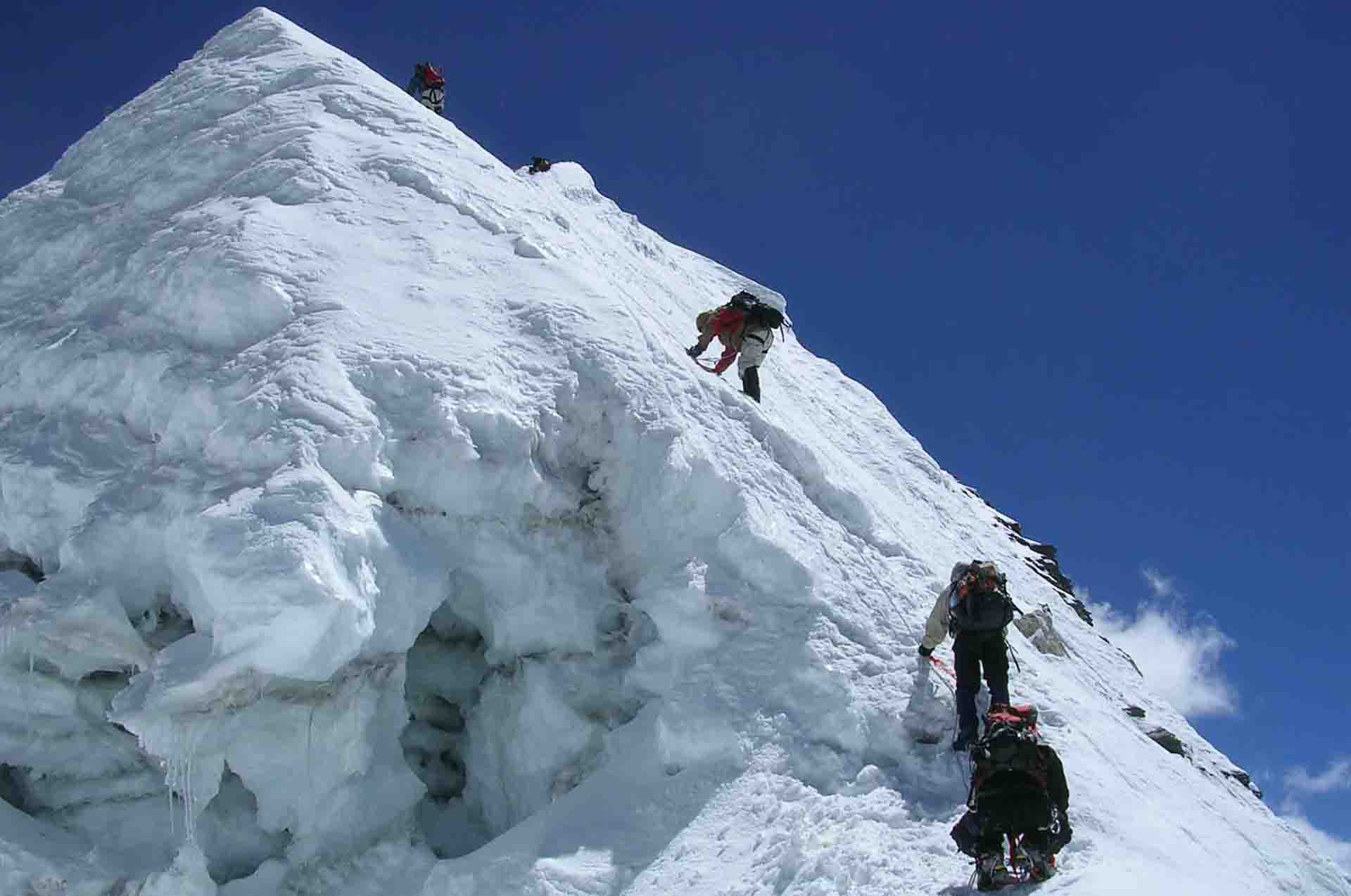







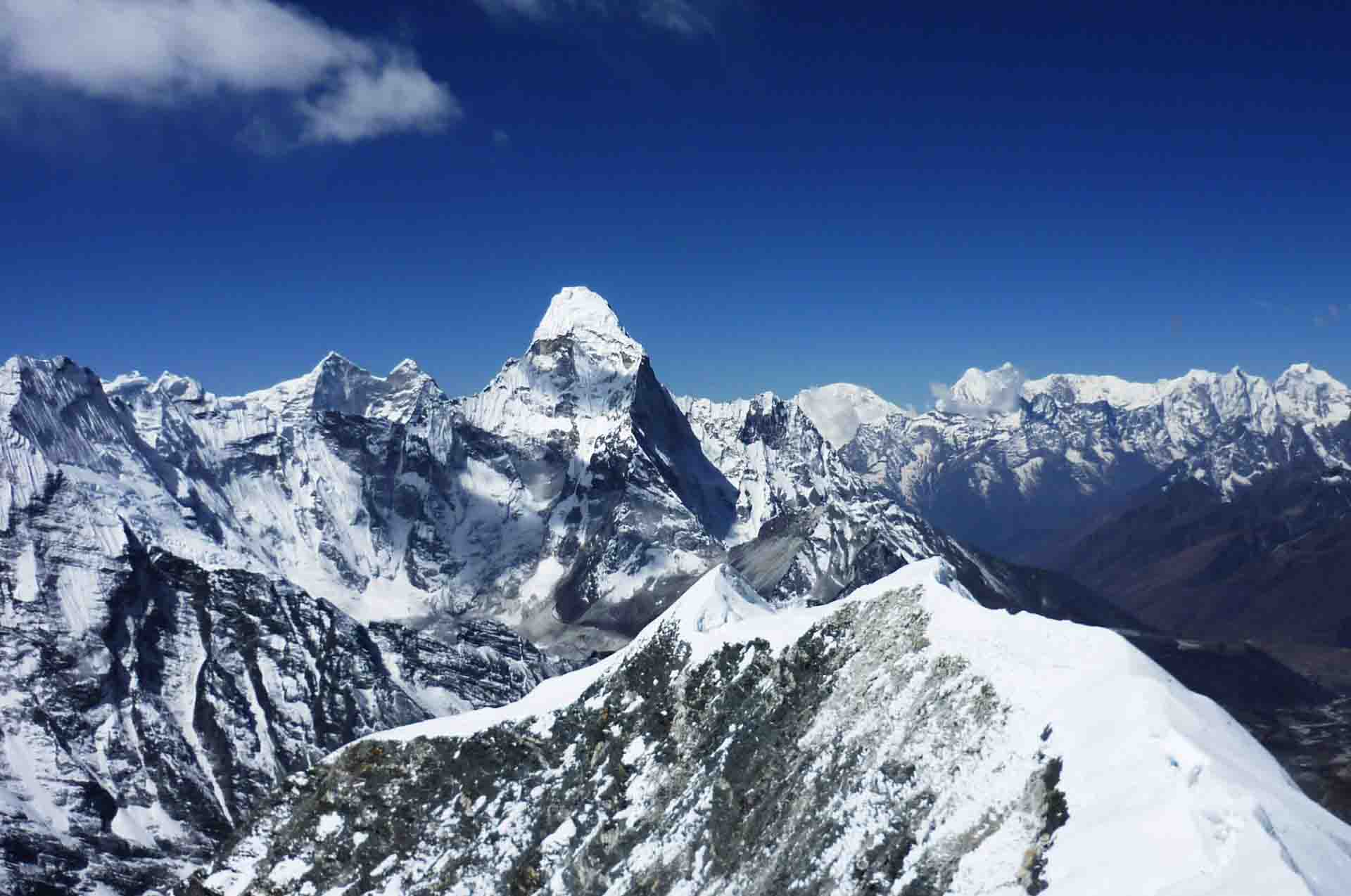
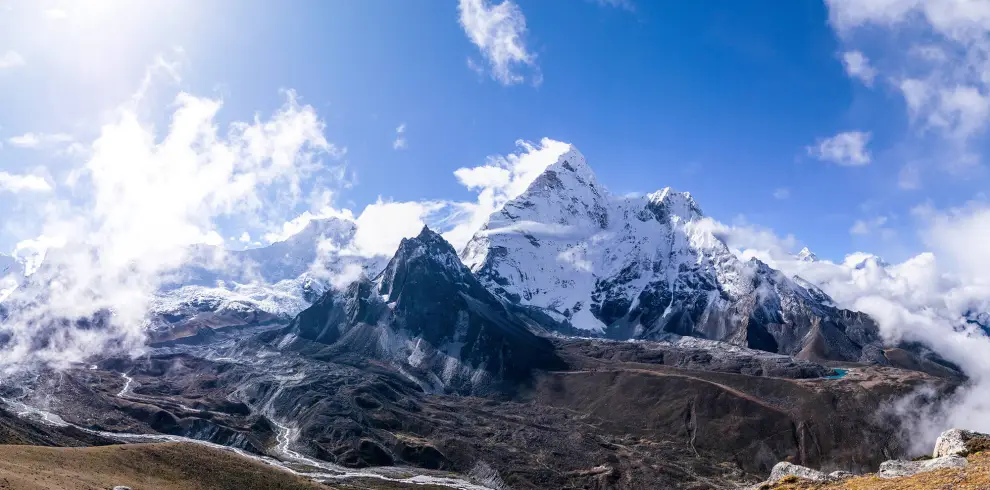
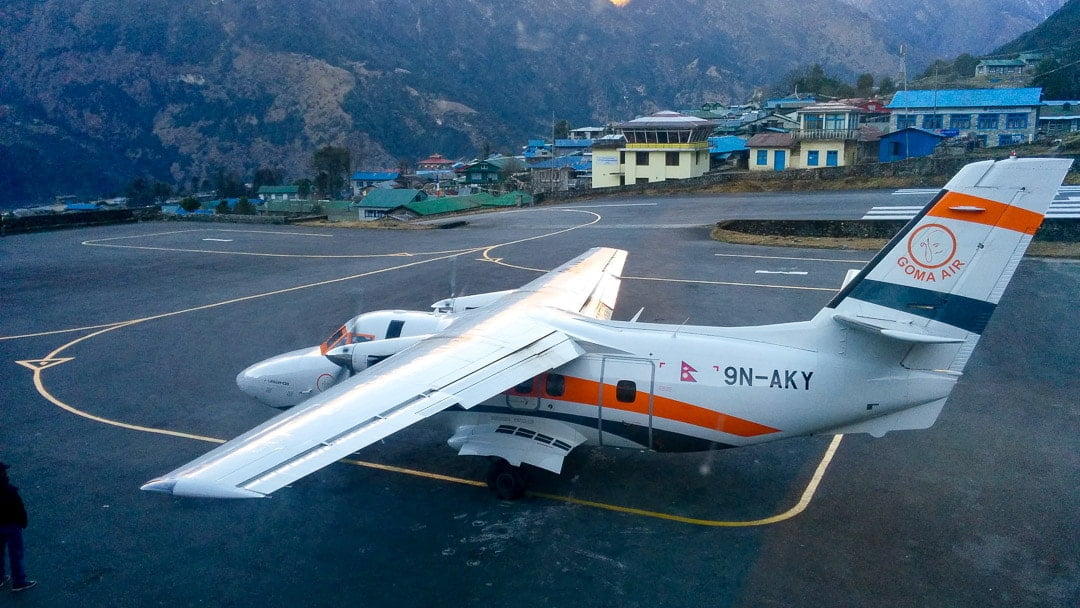
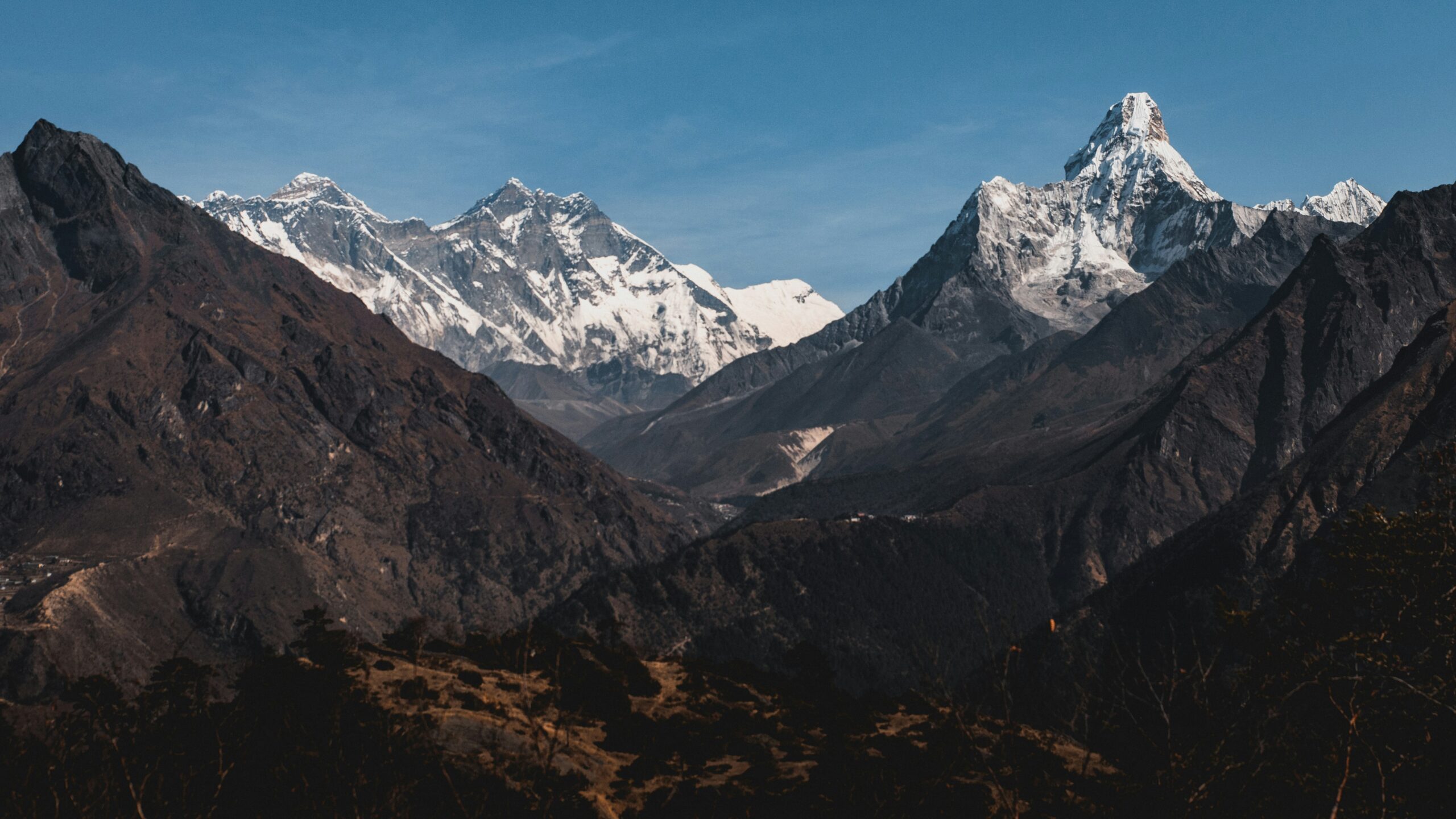
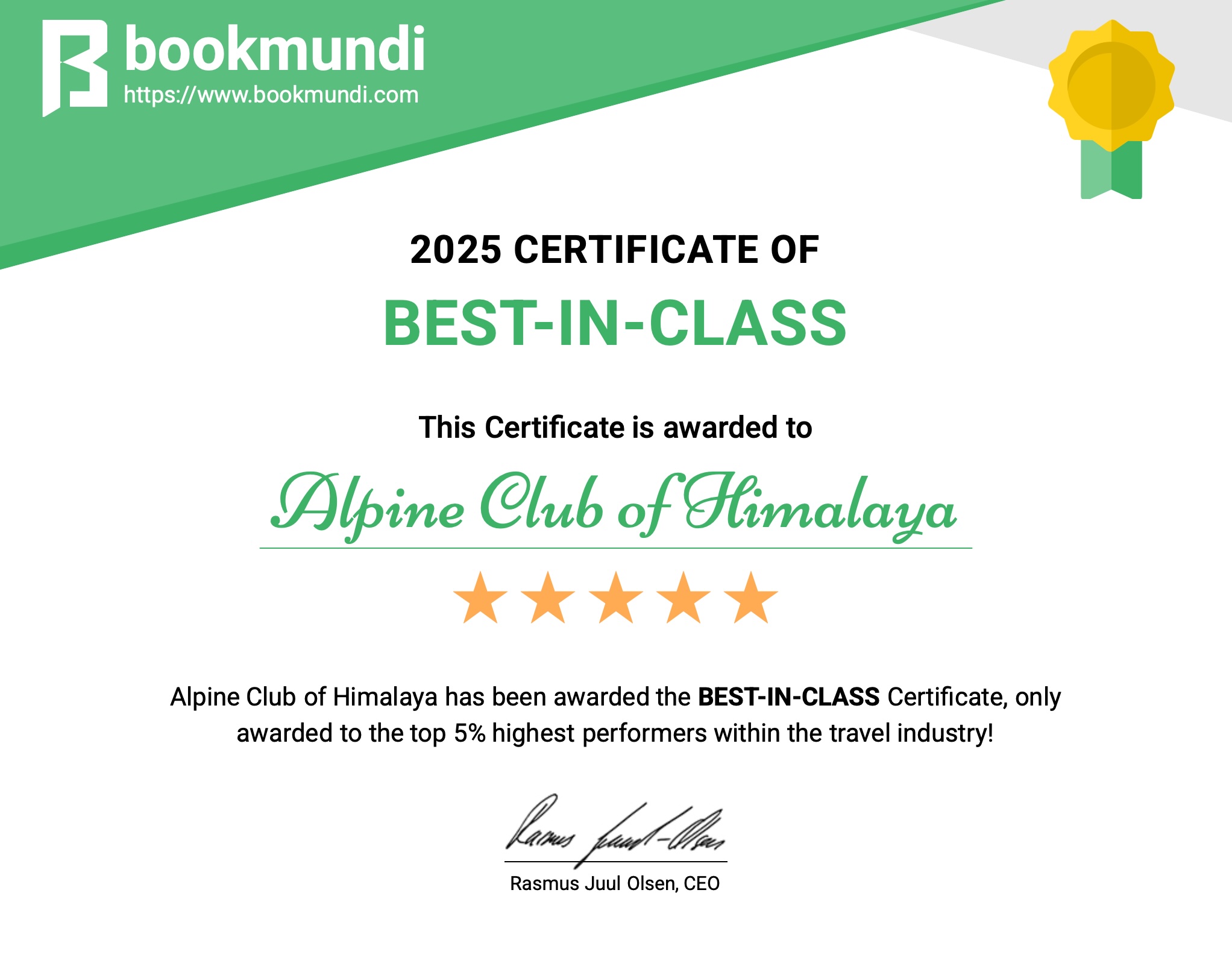
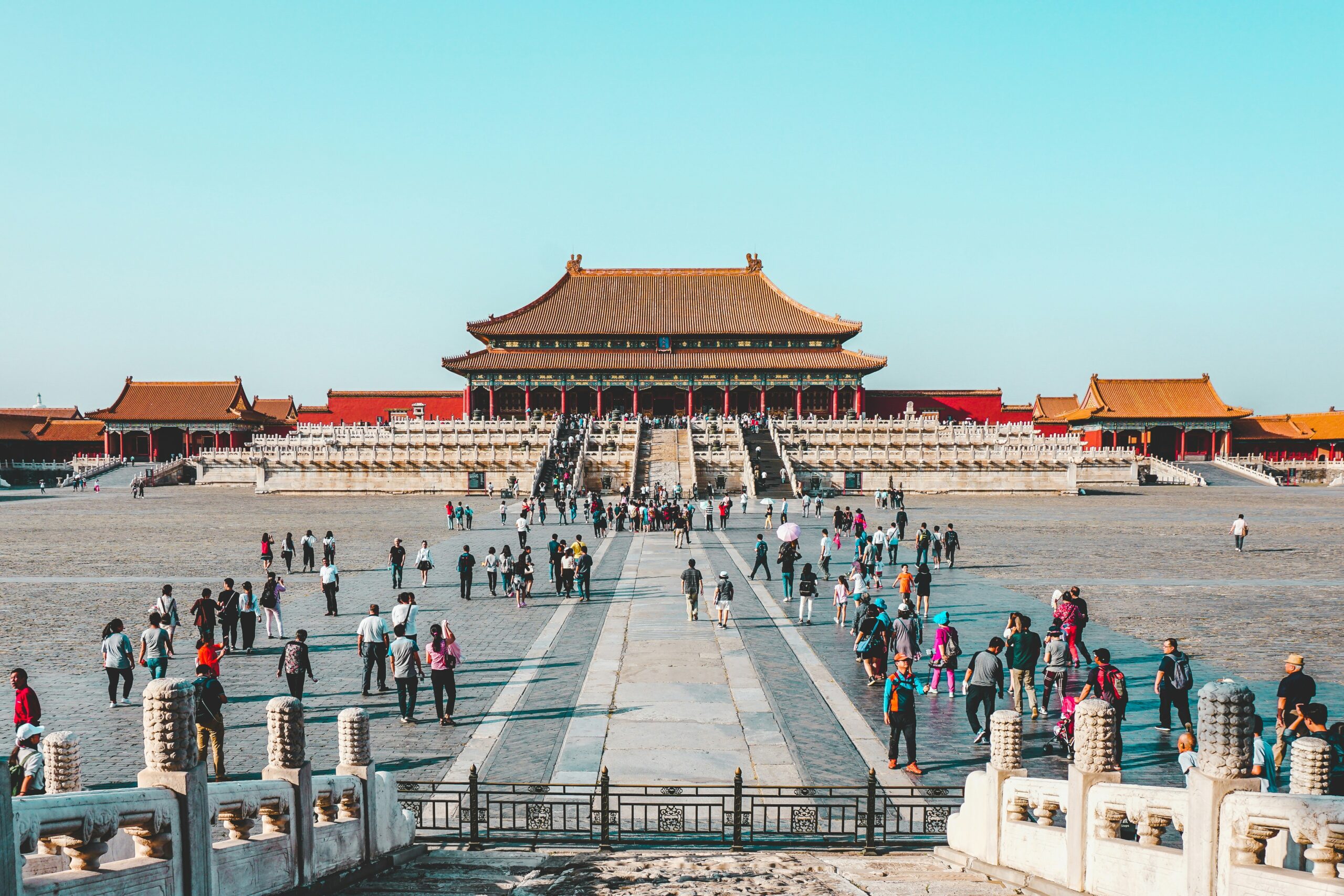
Write a Review